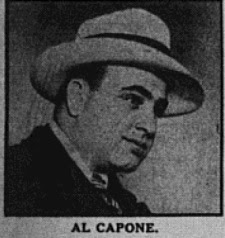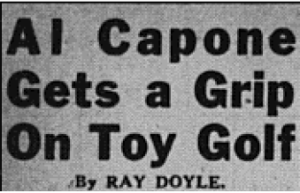Las Vegas, a city made famous by infamous men, has no statue honoring one of the most important figures in its history: Teamsters union titan James Riddle Hoffa.
Do you think it should?
If Las Vegas can take pride in being home of the National Museum of Organized Crime and Law Enforcement, then we certainly ought to have room in our hearts for the characters who helped make us what we are today. Not only do Benny Siegel and Moe Dalitz deserve statues in the town square, but room should be set aside for Jimmy Hoffa, too.
Wednesday marks the 39th anniversary of Hoffa’s disappearance from the parking lot of a restaurant in suburban Detroit. Murdered by his mob associates, his body was never recovered.
Back when banks wouldn’t loan a nickel to build a casino, and the thought of gaming companies trading on Wall Street was an unimaginable fantasy, the growth of Las Vegas was fueled in large part by loans from the Teamsters Central States Pension Fund. A couple hundred million dollars helped give the Strip a skyline, and Hoffa was partly responsible for that growth.
“Because Hoffa built up the Teamsters, and because he made the deal to bring in Allen Dorfman, the pension fund became a bank for Las Vegas and underwrote a significant amount of its growth,” UNLV History professor Michael Green says. “Not just on the Strip, but with Sunrise Hospital and other developments.”
Teamsters loans were notorious because they were influenced by associates of organized crime, and Hoffa was their man. But what’s bad for America has often been good for Las Vegas.
Who might we ask about honoring Hoffa?
Perhaps we should start with Paul Laxalt, our esteemed and respected former governor and U.S. senator. Laxalt went to bat on Hoffa’s behalf, writing a letter in 1971 to President Richard Nixon calling for a pardon for the convicted labor racketeer. Even at that early date Hoffa’s ties to the underworld were understood. That reputation was largely ignored inside Nevada, where Teamsters pension fund official Dorfman facilitated loans to casinos up and down the Strip.
The letter was nothing short of jaw-dropping, but hardly made a ripple of news in Nevada. In part, Laxalt wrote to the President, “Hoffa and Dorfman and their activities have been aboveboard at all times, and they have made a material contribution to the state.”
Dorfman in 1972 was convicted of accepting kickbacks to arrange a pension fund loan, and he was convicted again in 1982 for conspiring to bribe U.S. Sen. Howard Cannon of Nevada. Laxalt admitted he wrote the letter defending Hoffa at the request of Dorfman, who wouldn’t need a letter vouching for his character because he was murdered in 1982 by the Chicago Outfit.
Or maybe the family of legendary casino conjurer Jay Sarno could lend perspective. Sarno was the visionary behind the creation of Caesars Palace and Circus Circus, but it can be argued that neither place would have left the drawing board without mobbed-up Teamsters funding.
“It might have happened anyway, but you can honestly ask the question, ‘Would there have been a Caesars Palace and a Circus Circus without those Teamsters loans?’ ” Green says.
Investigative journalist and “Hoffa Wars” author Dan Moldea understands that what happens in Las Vegas can be hard to explain to outsiders.
“You have a guy like Moe Dalitz, who in Cleveland and the Midwest was viewed as a ruthless organized crime figure, but when he comes to Las Vegas he’s seen as a respectable citizen,” Moldea says. “… Hoffa was not unlike that.”
Is it possible for a place built by notorious men and means to rise from its boomtown dysfunction and inferiority issues without acknowledging — and even celebrating — its decidedly flawed founding fathers?
I don’t think so.
In time, that might be a saving grace of the Mob Museum: It might allow us to look at a part of ourselves without the rosy-tinted revisionism of the great Las Vegas casino propaganda machine.
So how about a statue in honor of Jimmy Hoffa?
Now, if we can only get a Teamsters loan to fund it.
John L. Smith’s column appears Sunday, Tuesday, Wednesday, Thursday and Friday. E-mail him at
jsmith@reviewjournal.com or call (702) 383-0295.


